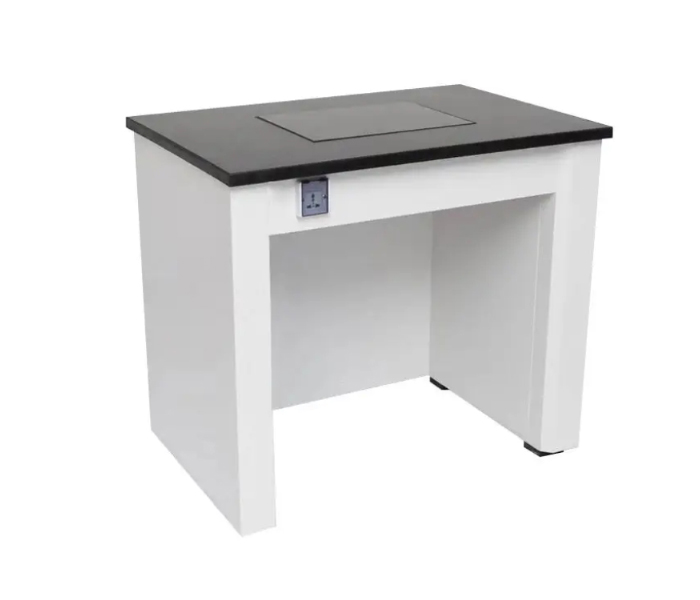Table of Contents
In laboratories where precise measurements and delicate instruments are key to successful experiments, even the slightest disturbance can affect outcomes. This is where anti-vibration tables come into play. These specialized tables are designed to absorb vibrations and provide a stable surface for equipment like microscopes, balances, and precision instruments. In this article, we will dive into the importance of anti-vibration tables, the types of labs that benefit from them, customization options available, and how to choose the right one for your specific lab needs.
Why Anti-Vibration Tables are Essential for Precision Lab Work
Lab environments often have various sources of vibrations, from foot traffic to nearby machinery, HVAC systems, and even external factors like street traffic. These vibrations, though barely perceptible to the human senses, can severely impact lab precision equipment. For tasks that require absolute stability, such as weighing minute samples or viewing specimens under a high-power microscope, even minor vibrations can cause inaccurate results, leading to errors in data and experimentation.
This is where anti-vibration tables excel. These tables are engineered to dampen vibrations, providing a stable working surface for sensitive instruments. By isolating the equipment from external movements, anti-vibration tables ensure that your instruments can function at peak accuracy.
Types of Labs That Benefit from Anti-Vibration Tables
Anti-vibration tables are not limited to one specific type of lab; many fields that rely on precision equipment can benefit from their use. Below are some examples of labs that find these tables indispensable:
Physics Laboratories: Physics experiments often require extreme precision, and any vibration can throw off delicate measurements. Anti-vibration tables are essential for conducting experiments involving optics, spectroscopy, or precision weighing.
Electronics Labs: In electronics research, small movements can affect the performance of sensitive equipment like oscilloscopes or frequency counters. Vibration-resistant lab furniture ensures stability during circuit testing and calibration.
Biotech and Pharmaceutical Labs: In biotechnology and pharmaceutical labs, accurate measurements are critical when working with DNA sequencing, sensitive scales, or electron microscopes. An anti-vibration table provides the necessary stability to avoid contamination or misreadings due to unwanted movement.
Metrology and Calibration Labs: These labs work with extremely fine measurements. Anti-vibration tables are a must for ensuring that calibration equipment provides the most accurate readings possible, free from external interferences.
Customization Options for Anti-Vibration Tables
One of the key benefits of anti-vibration tables is the ability to customize them to meet your specific lab needs. Depending on the type of equipment you’re using and the environment you’re working in, customization ensures optimal vibration control and functionality.
Tabletop Materials: Most anti-vibration tables are available with different tabletop materials like stainless steel, granite, or epoxy resin. Each material offers varying levels of vibration absorption, chemical resistance, and ease of cleaning.
Load Capacity: Different instruments have different weight requirements. Anti-vibration tables can be customized with varying load capacities to support heavy equipment or remain lightweight for portable lab environments.
Active vs. Passive Vibration Control: Anti-vibration tables can either feature passive or active vibration control mechanisms. Passive tables use materials designed to dampen vibrations naturally, while active tables use sensors and actuators to detect and counteract vibrations in real-time, offering more precise control.
Height Adjustability: Some labs benefit from height-adjustable anti-vibration tables. Whether you need to lower the table to sit comfortably during microscopic analysis or raise it for more ergonomic use, height customization can greatly enhance usability.
Leg Configurations: Anti-vibration tables can come with different leg designs, such as pneumatic legs for additional vibration isolation or heavy-duty legs for labs needing extra support for heavy instruments.
How to Choose the Right Anti-Vibration Table for Your Lab
Choosing the right anti-vibration table requires careful consideration of several factors, all of which depend on your specific lab needs and the equipment you’re using. Here’s what you need to look out for when making your decision:
Equipment Sensitivity: Consider how sensitive your lab equipment is to vibrations. For instance, high-power microscopes or analytical balances require more robust anti-vibration solutions. Choose a table with either passive or active vibration isolation based on the sensitivity of your instruments.
Environmental Factors: Look at your lab’s location and environmental factors, such as nearby equipment that produces noise or vibrations, foot traffic, or external sources like construction. A more active environment will require stronger vibration isolation measures.
Load Capacity: Make sure the anti-vibration table you select can comfortably support the weight of your equipment. Overloading a table could affect its ability to reduce vibrations effectively.
Work Surface: Depending on your needs, select a work surface that aligns with the requirements of your instruments and lab processes. Stainless steel and granite are excellent for long-lasting durability and easy maintenance, while epoxy resin offers superior chemical resistance.
Cost vs. Benefit: While anti-vibration tables are a crucial investment for many labs, costs can vary depending on customization options. Make sure to balance the cost of the table with the potential benefits it offers in terms of lab accuracy and efficiency. Long-term savings on fewer errors or damaged samples may justify a higher upfront investment.
Conclusion
Anti-vibration tables play a critical role in ensuring the accuracy and precision of sensitive lab work. Whether you’re working in physics, biotech, or electronics, the right vibration-resistant lab furniture can mean the difference between success and failure in your experiments. With customization options to suit your specific needs, choosing the right anti-vibration table ensures your lab remains stable, productive, and compliant with the highest standards.




